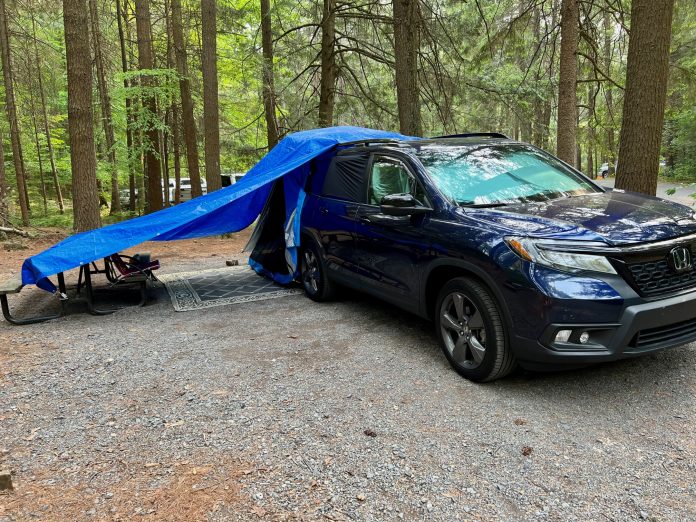
Now that I am officially retired from medical practice I suddenly have the time to pursue some latent interests. One of those interests is camping. But now that I am almost sixty years old I have no desire to sleep on the ground anymore. Since I do not want to invest in an RV at this point, I decided to try car-camping.
I figured this would also allow me to test out some gear that I have collected in case of an emergency bug-out situation. Bugging-out on foot will not be a reality for me thus, if sheltering-in-place fails, my plan involves vehicular transport. My plans for this summer and fall involve camping in various state parks in surrounding states while I see some sights and test out my gear.
Some of you may recall a previous article about camping. I am no stranger to sleeping on the ground in a tent and “watering the weeds” in the wilderness. But those experiences are now 25 to 40 years behind me. Although I no longer have to wrangle offspring in the field, wrangling my own changing needs means that I had to plan carefully.
I am a solo female who would be be traveling and sleeping alone, and hauling/loading my own gear. I had to make sure that what I used were things that I could lift and/or set-up by myself. I also needed redundancy and back-up plans as there wouldn’t be another person to call on for help if something failed.
To get started I watched YouTube camping videos all winter to gather ideas and find out what new gear was out there that I might find useful and what of my own 40-year old gear might need to be replaced. When planning I started with the basic human needs – Food, water, shelter from elements , warmth, and hygiene, and then went out from there. What follows is what has worked for me so far. The tweaking is ongoing.
Food
I figured that I easily had food covered, what with all my canning and dehydrating adventures. I could rehydrate and heat in the field virtually anything from my pantry. But I did include some small portion convenience foods as well in case I was too tired to cook or the weather wasn’t cooperative. None of it was gourmet but it was nutritious food. I decided not to mess with foil pouch “campfire cooking” in case I wasn’t able to have a campfire – at least for the first few go-rounds.
For cooking purposes I took along a candle stove for experiments, but I also brought and used a single burner butane stove, which proved invaluable.
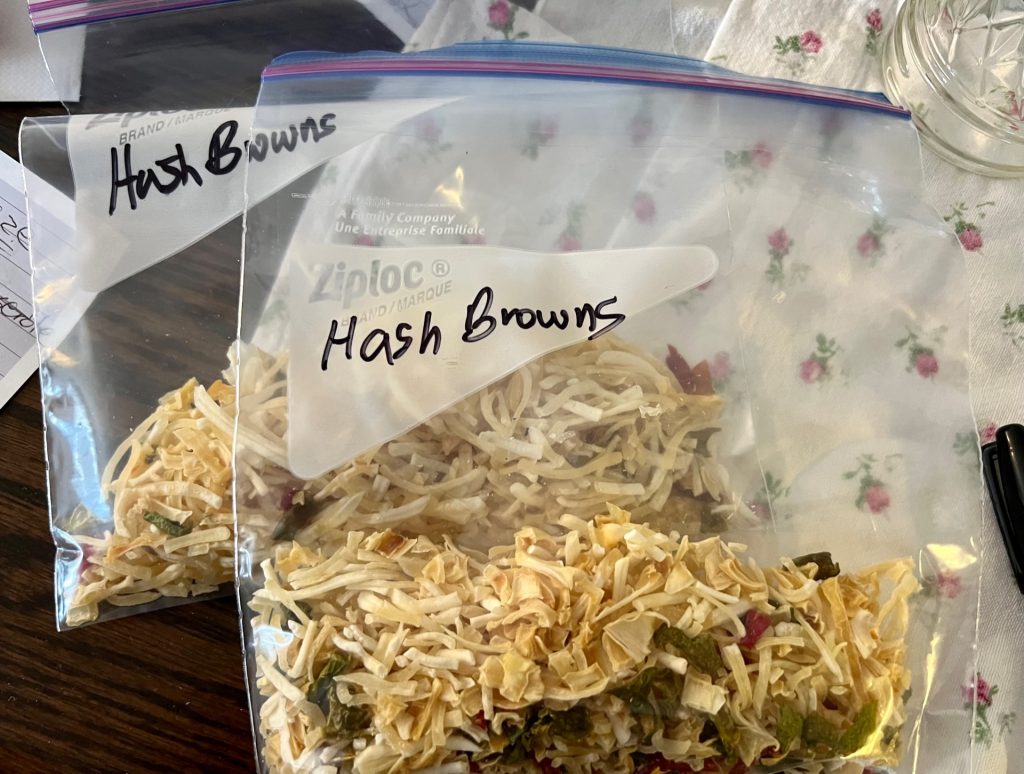
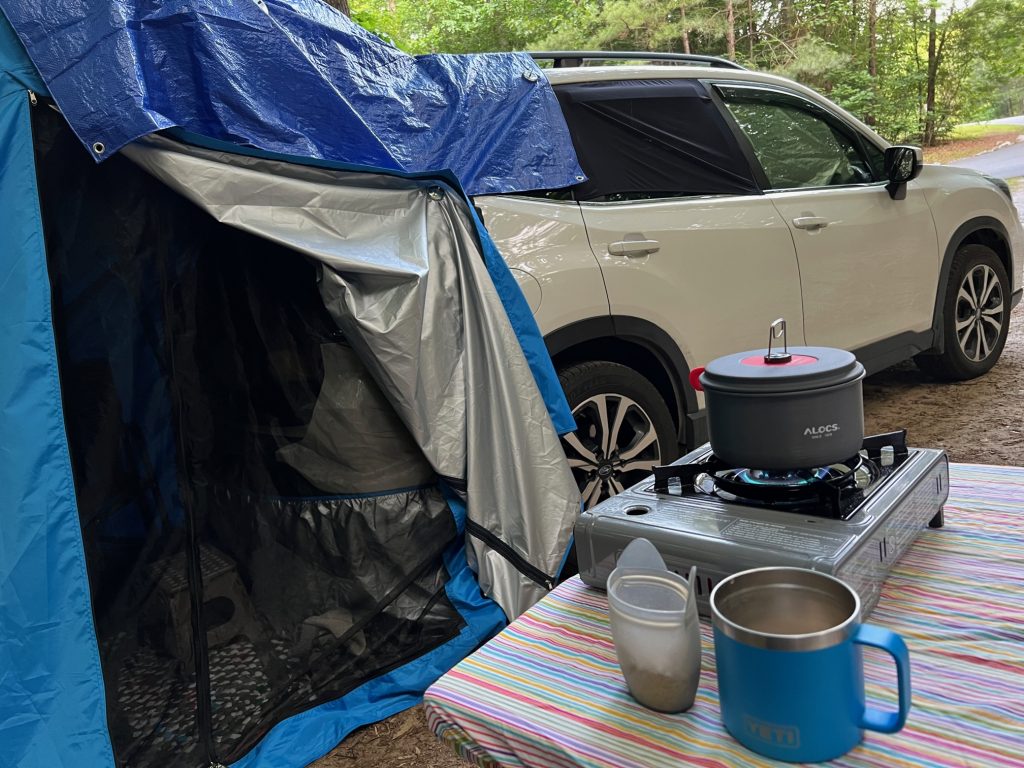
Water
I used a three-pronged approach for water. I took along a couple jugs of my stored emergency water so I could make sure it still tasted fine after being stored for 9 months. But I also had a picnic jug filled with ice to drink as it melted and drank the melted ice from the frozen water bottles (used instead of actual ice or blue blocks) in the cooler as well.
The only “fail” in this part was when I discovered that my 30 year old jug and cooler were wholly inadequate beyond about 12 hours. So I broke down and bought Yetis from the discount sporting goods store. On the next outing those held ice for a whopping six days! Even if the purchase was painful, it was worth it in the end.
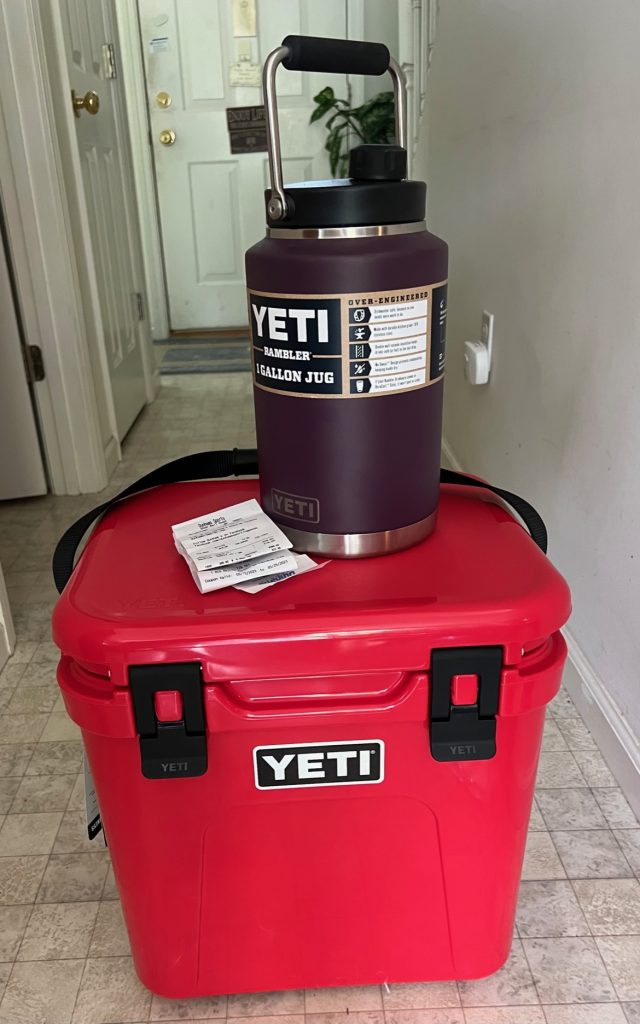
Shelter
My initial shelter investment (besides the car) was something called a Tail Veil. Actually I think it was a knock-off and not the name brand. I found it on Amazon. It’s basically a small tent whose only support is the raised tailgate – no poles or guy lines to mess with. I was sleeping in the car (more on that in a bit), so this space was only for rain/bug protection and privacy for changing clothes, etc. I did stake the corners and use some strong magnets that I bought at Harbor Freight to augment the elastic to further secure it to the vehicle. I also added a small tarp to further cover the intersection between the car and the tent (also anchored with magnets) to help prevent any rain leaks.
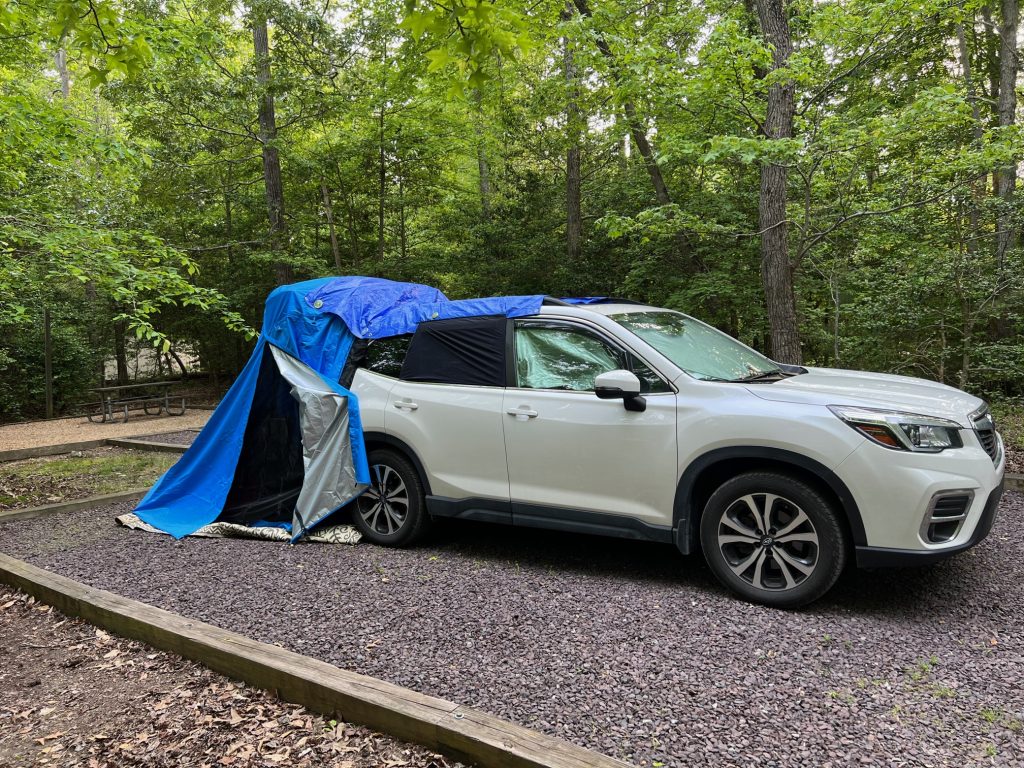
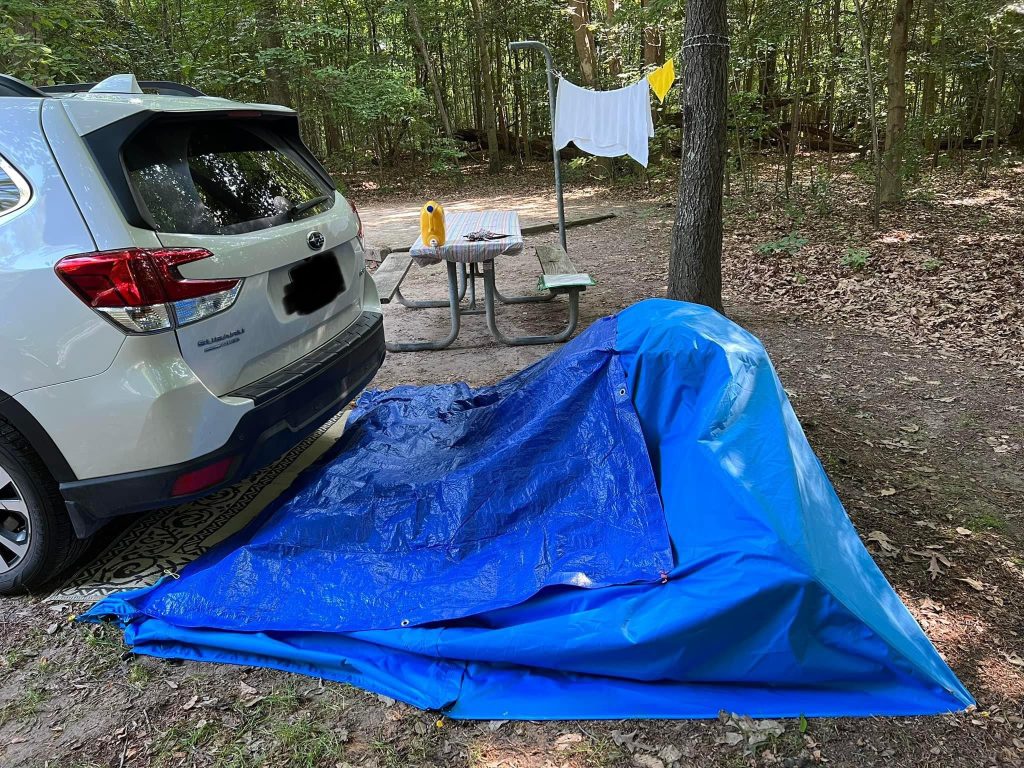
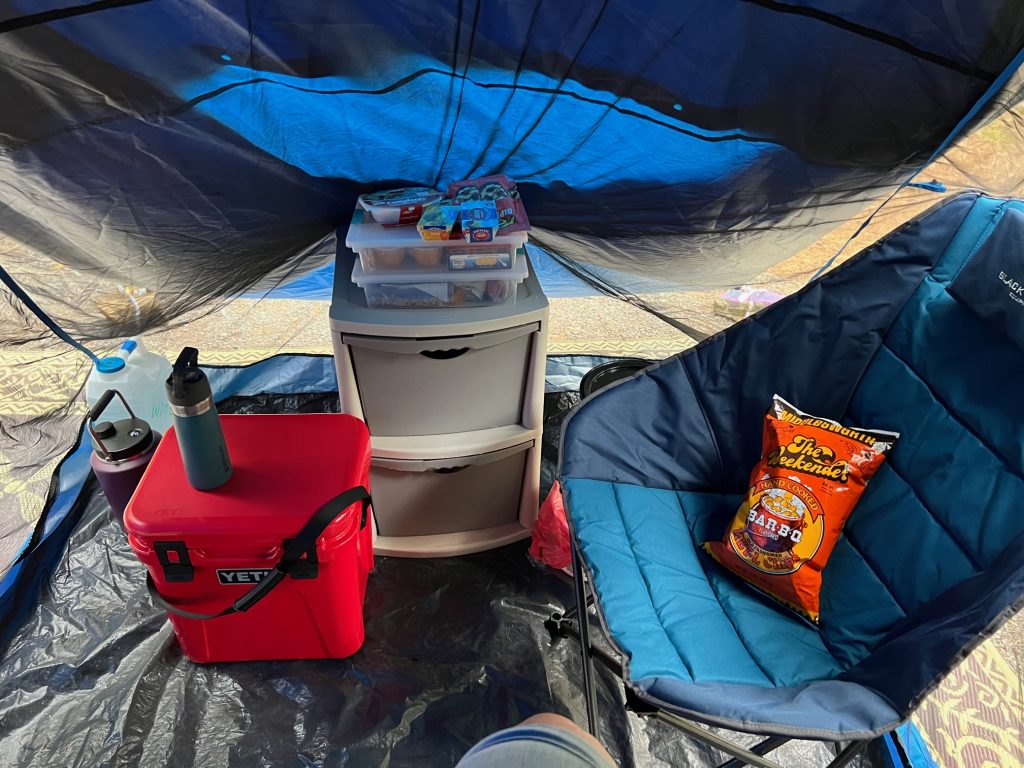
FYI – my vehicle required the insertion of a carabiner into the lift gate latch in order to fool the car’s electronics into thinking that the gate was closed. I learned from the internet that an open hatch can over time run down the vehicle’s battery unless work-arounds are employed. So beware on that score. My longest stay in any one place without starting the car was 3 nights, and that trick worked at least that long for me. Still, I brought along specialized jumper cables to plug into my Jackery 1000 power station, just in case my plan failed.
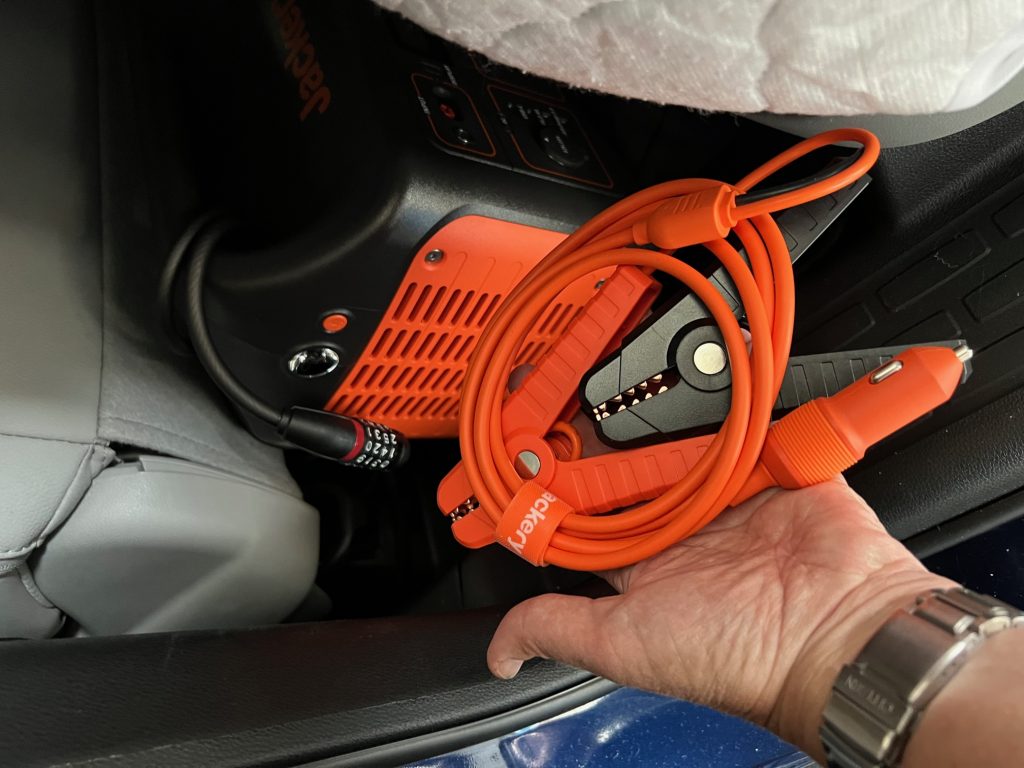
For sleeping I had a 4-inch trifold memory foam mattress across the cargo area and folded back seats of the car. This was placed on top of a blanket and a yoga mat. ( So much more comfy than the ground.) A fleece sleeping bag and wool blanket provided warmth and a 12 volt electric blanket sat in stand-by if needed when the nighttime temps were in the low 40’s. I could charge phone and electric blanket on my power station. I actually really liked this set-up. With the window covers up it felt like a cozy cave and was quite comfortable.
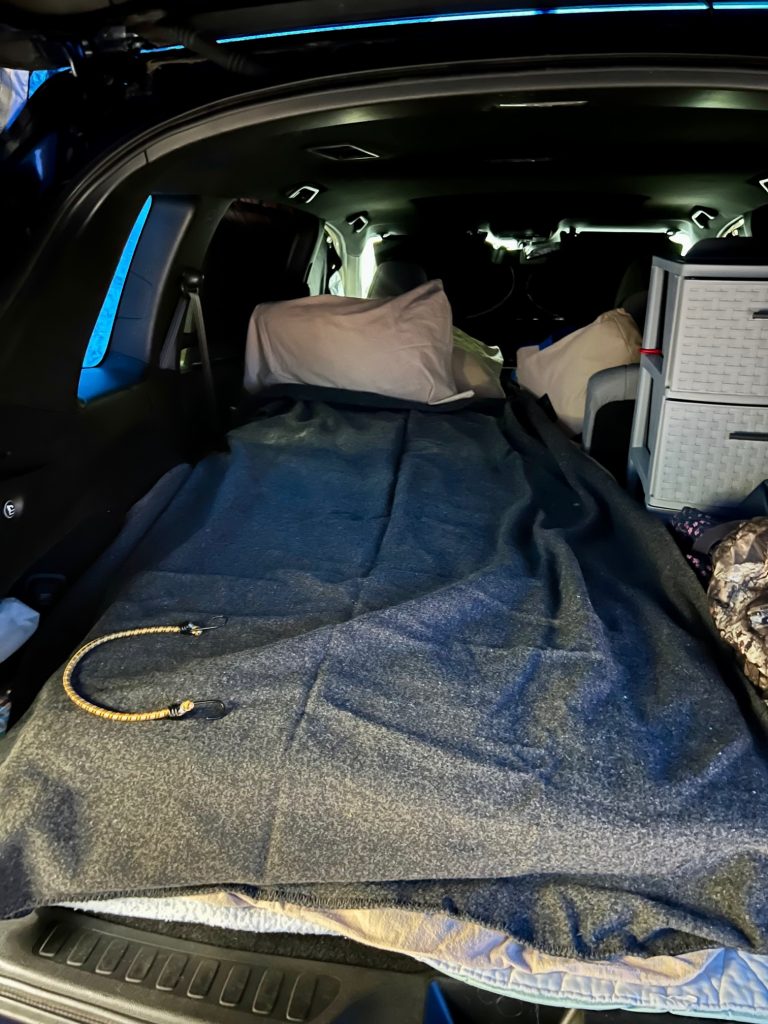
This vehicle (Honda Passport)has a fairly level transition between cargo area and folded seats, but my previous vehicle (Subaru Forester) required me to build a bit of a raised platform in order to make things more level. Videos abound on the internet as to how to build such a thing but I chose not to do it for the current vehicle. I thus lost the potential for storage underneath the platform but it also gave me the most headroom. Sleeping with my nose against the ceiling is not my idea of comfort no matter how much storage it provides.
And by the way, comfort was the key to this whole operation. If I wasn’t comfortable and wasn’t sleeping well, then that would destroy my whole attitude toward the rest and I wouldn’t do it anymore. Sleep comfort was my first priority.
Also as far as warmth goes, my addiction to wool served me well during the cool nights and rainy days that I encountered so far. Wool stretch pants and wool T-shirt for pajamas, wool socks, wool blanket, and wool hoodie all saw faithful service during my outings. Layering is also helpful. The temperature at 5 AM on the way to the bathroom might be 48 degrees, but by 2 PM it might be 80, so flexibility is key.
Hygiene
I have so far only stayed at designated state park campgrounds – both for security reasons as a solo female camper and for personal comfort. I “have” dug cat-holes in my camping life, but I have reached the stage in life where a flush toilet is much preferable. Hot showers are also a plus, but I can get by with “shower wipes” for a few days if needed. All of that is great, but women my age also often need to get up in the night. In such a situation finding your shoes, jacket and flashlight in the dark is not ideal when you are in a hurry. Thus, I set up a night-time bucket, lined it with grocery bag and livestock bedding pellets, and topped it with a pool noodle for just-in-case. This is another huge plus for having the tail veil with rain fly – privacy for such issues. This set-up has worked well for me so far.
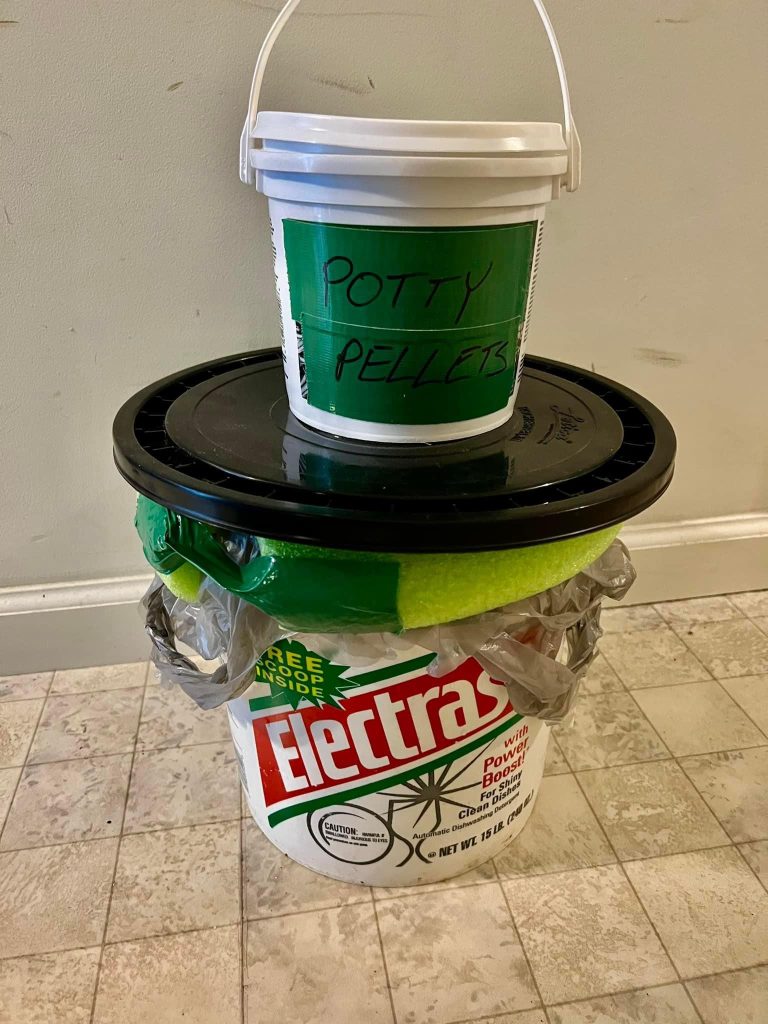
Safety
As stated above I have thus far only stayed in designated, staffed, state park campgrounds. My carry permit is recognized in some states but not others, and an arrest-able offense in still others, so I have to be careful about my safety plan. I did keep bear spray within arm’s reach when I was sleeping and also my 2000 lumen StreamLight in case anything on two legs or four came lurking around at night. But the beauty of sleeping in the car means that I could also button up and lock myself inside the vehicle at night if needed. You can’t do that sleeping in a tent.
I now have 11 nights of camping in four different state parks in three different states under my belt. These adventures have just begun so there will likely be follow-up articles about specific gear and situations. But so far I have answered several camping and bug-out questions for myself and learned a few things besides.
-My stored water tasted fine nine months out.
-My home dehydrated food also tasted fine.
-The Jackery 1000 worked well, charged on the drive, and gave me peace of mind about the car battery.
-My gear “does” all fit in the car with room for me to sleep, but I need to be judicious.
-I did need that folding step-stool to get in and out of the back of the car. (I am short)
-The candle stoved worked but was “meh”.
-The butane stove was great.
-You “can” heat commercial microwave meals in a foil pan over the campfire. (Hormel turkey with stuffing and gravy was comfort food on an evening when I was tired, sore, and grumpy.)
-I need to freshen-up my lantern batteries.
-The weather band radio was handy with no cell service.
-Park Rangers sometimes check-in on you if they know you are alone.
Stay tuned as I traipse around the Eastern U.S. trying out more gear and strategies for car camping. It could be entertaining in ways both good and bad.



